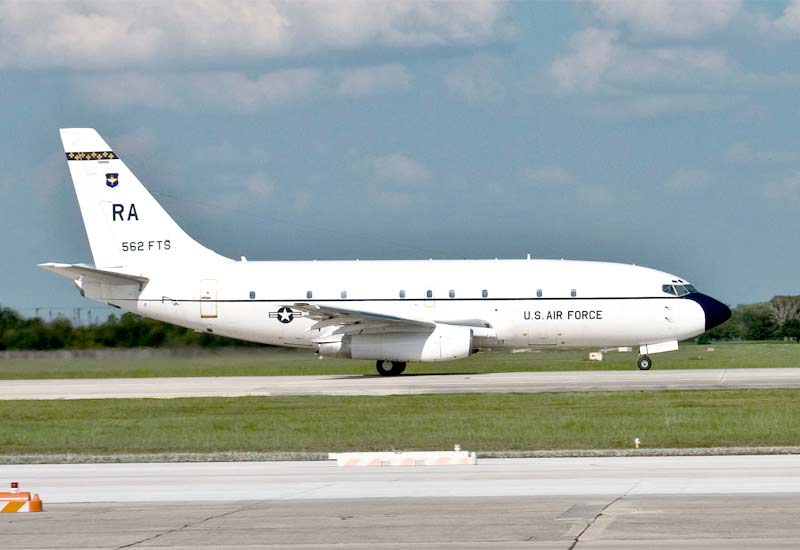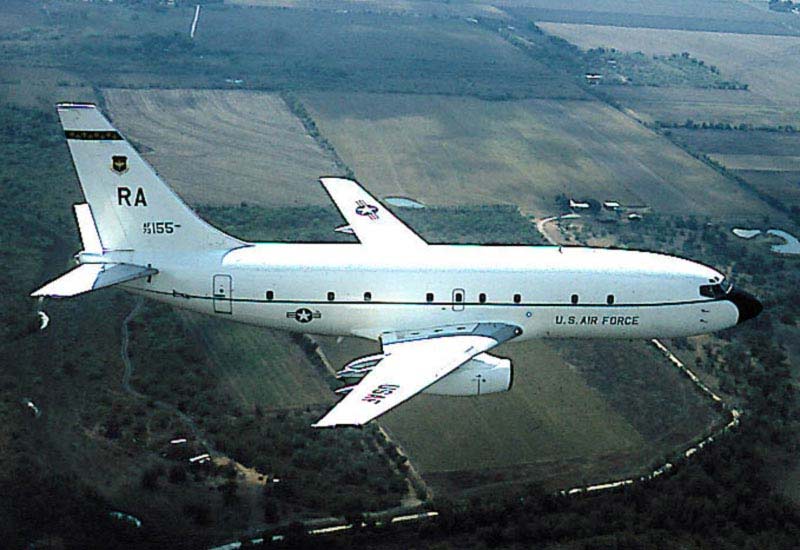The Boeing T-43 was a modified 737-200 used primarily for USAF navigator training, featuring advanced avionics suites.
In brief
The Boeing T-43, affectionately known as the Gator, was a military adaptation of the Boeing 737-200 designed specifically for the United States Air Force (USAF) as a navigator training platform. With modifications including advanced navigation and avionics equipment, the T-43 served to prepare navigators for the technological demands of modern air operations. Its role was crucial in transitioning navigator training from older, propeller-driven aircraft to jet-powered equipment, aligning training more closely with operational fleet standards.

The Boeing T-43 Gator
The Boeing T-43 (Gator) marks a significant chapter in the evolution of navigator training for the United States Air Force (USAF). Developed during a period of rapid technological advancement in aviation, the T-43 was birthed out of a necessity for an updated, jet-powered training platform that could adequately prepare navigators for the complexities of modern air combat and navigation. The program was launched in the late 1960s, reflecting the USAF’s strategic shift towards more technologically advanced, jet-powered aircraft.
The need for such a specialized aircraft arose from the limitations of then-existing training platforms, which were largely propeller-driven and not reflective of the operational environments navigators would face in contemporary or future aircraft. As such, the Boeing 737-200, a successful commercial airliner known for its reliability and performance, was selected as the base model for modification into what would become the T-43.
The development of the T-43 was not just a response to internal USAF requirements but also a reflection of the broader Cold War era’s demands for heightened readiness and technological superiority. This period was characterized by an intense technological race, with advancements in aviation considered crucial for national defense and strategic dominance. The introduction of the T-43 into the USAF’s training regimen was a direct response to these pressures, designed to ensure that the USAF’s navigators were equipped with the knowledge and skills necessary to operate in an increasingly complex and technologically sophisticated airspace.
The T-43 took its maiden flight on March 10, 1973, signifying a leap forward in the training capabilities of the USAF. The aircraft did not receive a specific NATO nickname, as it was predominantly a USAF training aircraft with no direct combat or multinational role that often prompts such designations.
Design of the Boeing T-43 (Gator)
The Boeing T-43 was designed as a flying classroom, outfitted with state-of-the-art navigation and electronic systems. Based on the Boeing 737-200 airframe, the T-43 underwent significant modifications to meet the specific needs of navigator training. The interior was reconfigured to include stations for student navigators, instructor stations, and the necessary equipment to simulate a wide range of navigation scenarios.
One of the design’s primary advantages was its ability to replicate the cockpit and operational environment of contemporary USAF aircraft, providing trainees with realistic training experiences. However, one drawback of the T-43 was its reliance on the 737-200 platform, a design that would eventually become outdated, necessitating future updates or replacements to keep pace with advancing technology.
In terms of dimensions, the T-43 mirrored the 737-200, with a wingspan of 93 feet (28.35 meters) and a length of 100 feet (30.48 meters). The aircraft was powered by two Pratt & Whitney JT8D engines, ensuring reliability and a degree of performance consistent with commercial airline operations, albeit in a military training context.
Performance of the Boeing T-43 (Gator)
The T-43’s performance characteristics were closely aligned with those of the Boeing 737-200, albeit with modifications to suit its training mission. It featured a cruising speed of approximately 530 mph (853 km/h) and a maximum range of 2,500 miles (4,023 kilometers), enabling long-duration training missions without the need for refueling. The aircraft’s operational ceiling was around 35,000 feet (10,668 meters), allowing trainees to experience high-altitude navigation.
When compared to contemporaneous navigator training platforms, the T-43 stood out for its jet-powered propulsion and advanced avionics suite, offering a more realistic training environment that better prepared navigators for service in modern air fleets. While not designed for speed or agility like a fighter jet, its performance was perfectly tailored to its role as a training aircraft, offering a balance of reliability, endurance, and technological sophistication.
Variants of the Boeing T-43 (Gator)
The primary variant of the T-43 was the T-43A, which served as the USAF’s standard navigator training aircraft. Additionally, there were a few specialized variants, including the NT-43A Radar Test Bed, used for radar cross-section tests and aerodynamic experiments. The specific differences between these variants lay mainly in their internal configurations and the equipment they carried, tailored to their unique roles within the Air Force’s training and testing missions.

Military Use and Combat of the Boeing T-43 (Gator)
The T-43 was primarily a non-combat aircraft, designed and utilized for navigator and other specialized training within the USAF. It did not carry armaments nor was it deployed in direct combat roles. However, its contribution to military readiness should not be underestimated, as it played a crucial role in training navigators who would go on to serve in a variety of combat aircraft across the USAF fleet.
The aircraft saw extensive use throughout its service life, contributing significantly to the strategic capabilities of the USAF by ensuring that its navigators were proficient in using the latest technology and techniques. The T-43 remained in service until it was eventually replaced by more modern training platforms, such as the T-1 Jayhawk for some navigator training aspects, reflecting the ongoing evolution of military training needs and technology.
While the T-43 did not participate in combat, its impact on the effectiveness and preparedness of the USAF’s air operations has been significant, underscoring the vital role of advanced training platforms in modern military strategy. The aircraft was not sold to other countries, remaining a unique asset to the USAF until its retirement.
–
The Boeing T-43 Gator served an essential role in the development and refinement of USAF navigator and aircrew training, bridging the gap between older training platforms and the requirements of modern, technology-driven air operations. By providing a realistic and technologically advanced training environment, the T-43 contributed significantly to the operational readiness and effectiveness of the USAF, underlining the importance of dedicated training platforms in maintaining the edge in military aviation capabilities.
Back to the Special Aircraft section